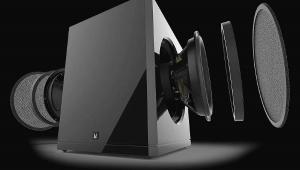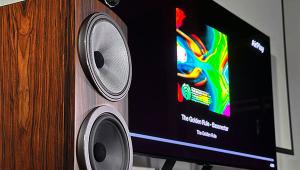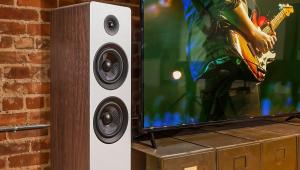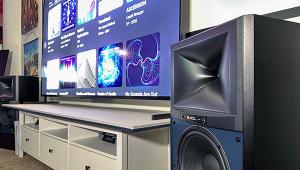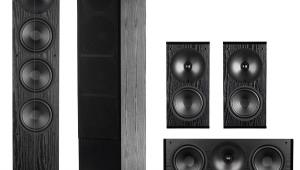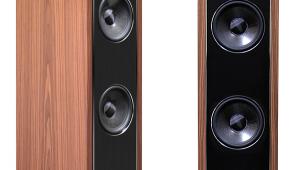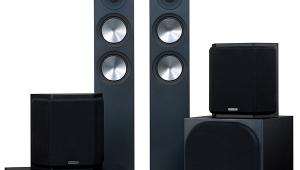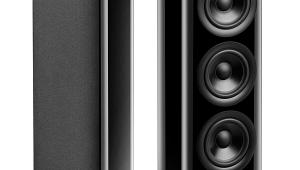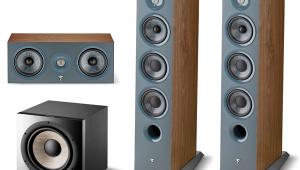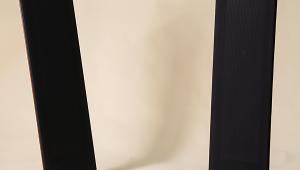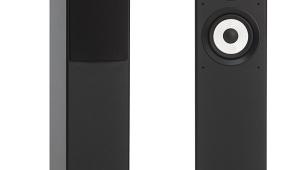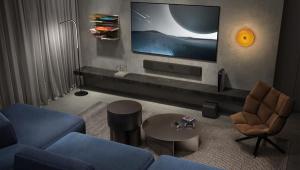Perlisten Audio R5t Loudspeaker and D15s Subwoofer Review Page 2
Setup
The R5ts in my room were positioned roughly 9 feet apart, 4 feet out from the back wall, and angled toward the primary listening seat. My seated ear height was a bit too high for the speakers' tweeter-mid module, so I tilted the Perlistens rearward a little more than their already modest backward slant.
I used a Denon AVR-X6700H receiver with its own internal amplifiers for most of my listening. The Denon was up to the challenge despite the R5t's 4-ohm rating, though it did run noticeably hotter (without the external fan I typically use) than its usual toasty self. (If you don't use an appropriate fan, be sure your AVR has plenty of ventilation.) All the source material I used was lossless and from discs, including CD and Ultra HD Blu-ray. Disc players were an Oppo UDP-203 for movies and a Marantz UD7007 for music.
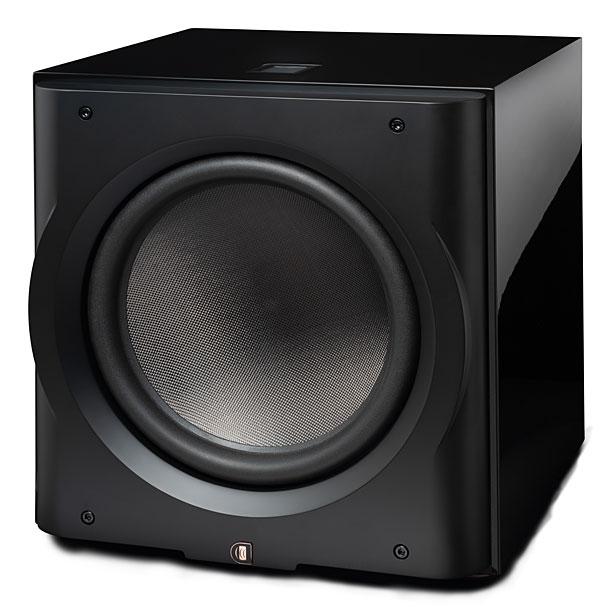
My very large room provides little deep bass support for full-range loudspeakers. It also thickens the upper bass between 100 and 200Hz, which is both audible and measurable at the listening position. Similar bass issues are common to nearly all domestic rooms. Yes, you should always try for the optimum loudspeaker setup prior trying other solutions, but in my situation, and likely in many home theaters, radically rearranging your room for a possible fix isn't always possible when both music and movies are on the menu. The most widely available cure for this in the home theater world (one that, strangely, is rarely accepted in the two- channel audio world) is room EQ. For this review I used Audyssey MultEQ xt32 (not, as yet, Audyssey's new MultEQ-X), but limited to under 300Hz so as not to alter the Perlistens' basic sound. By using room EQ for low frequencies, where a speaker is most likely to be significantly affected by the room, you aren't so much equalizing the speakers as you are evaluating them as they might perform in a "better" room. (The main audiophile argument against room EQ is that you're somehow polluting the source—as if the room itself isn't already doing that.)
Performance
Auditioned without the subwoofer using two-channel music, the R5ts performed superbly in ported operation with one exception. On challenging music with powerful bass transients—in this case Kodo drums played back at high volume level—one speaker expelled an unmusical bass burp that was clearly not present in the source. I briefly substituted a more powerful Parasound Halo A-52+ amplifier for the front two channels to make sure the anomaly wasn't simply the Denon amp giving out, but the problem remained. My home theater area is modest (estimated at just over 3,000 cubic feet), but fully open to other spaces that raise the total volume speakers must contend with to well over 6,500 cubic feet—a challenge for any loudspeaker with relatively small woofers. The room correction I applied also increased the bass by a few dB, which may have contributed to the anomaly.
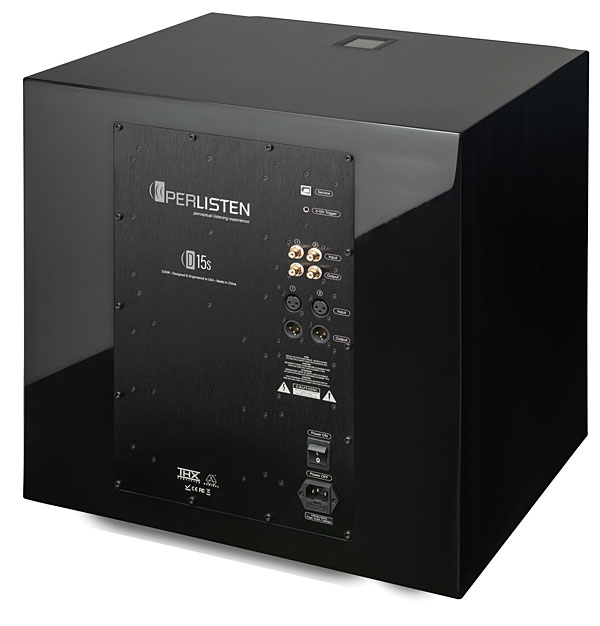
Apart from that isolated issue, the Perlisten R5t's bass was as tight and powerful as I've ever heard in my room without adding a subwoofer. Nothing else fazed it. And while I might have pined for more deep bass grunt, I suspect that a music enthusiast will be thrilled by the R5t's standalone performance when listening with them in a less wide-open space than mine.
The R5t's sound leaned more toward the analytical than the warm and fuzzy, with a clean top end. And though I wished for a little more "air" than they offered in my large room, this was barely a concern. They excelled with all music I threw at them, from female vocals both famous (Holly Cole, Loreena McKennitt) and not so well-known (Sinne Eeg, Josefine Cronholm), to male vocals (Elvis Presley, Toto), and instrumentals of all descriptions. They offered impressive soundstaging, solid dynamics, and low coloration, permitting good recordings to fully shine.
When I first auditioned the R5t together with the D15s subwoofer (with Audyssey engaged below 300Hz) I again experienced some overload issues clearly originating with the tower speaker and not with the sub. This was not surprising given the higher playback levels that having a subwoofer in a system tends to invite. But then I reconfigured the R5ts into their sealed mode and the issue disappeared. From then on, I experienced no problems with any source material I played with the sub engaged, even at levels high enough to make the neighbors complain—or want to come over to listen!
With the subwoofer now backing up the R5t towers, the sound jumped to another level. Every bass-heavy selection I tried—drums, organs, electronica—sailed through, comfort- ably exceeding the performance of other subs I've used by a significant margin. It didn't quite reproduce the low-level 16Hz pipe organ note in Saint-Saëns Organ (Third) Symphony but impressed on everything else. Several cuts actually vibrated the back of my listening seat! That might have been partly due to having the sub positioned about 6 feet behind me, but even in that spot I was never able to localize it (a good indication of low distortion) with the crossover set to 90Hz.
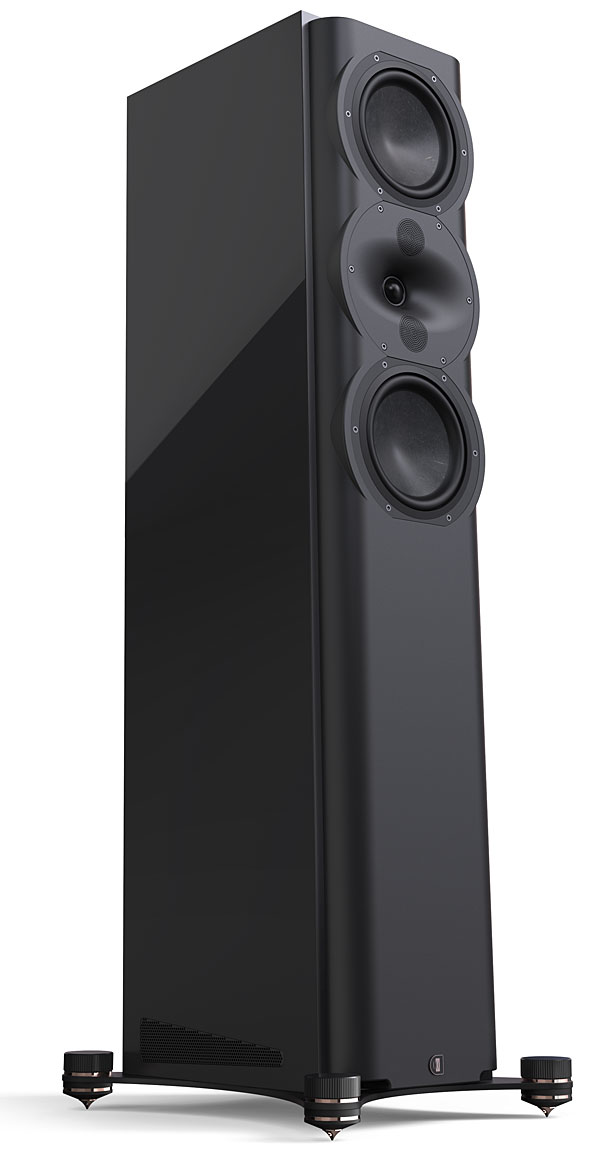
In all other respects. The R5t's performance when used in combination with the D15s subwoofer equaled or exceeded its performance au naturel. As noted earlier, I would have liked a little more top-end air, but in no way was the sound closed-in or dull. In fact, it may not even be the best choice for those who prefer a more forgiving, warm presentation. But freed up by the subwoofer from handling the bottom two bass octaves in my listening room, the R5t tower's transparency, lack of coloration, and ability to throw a wide and convincing soundstage was beyond criticism.
But even that description doesn't do full justice to the superb dynamic range capability of the Perlisten R5t/D15s combo, which was screamingly evident when I fired up the whole surround sound system (supported by non- Perlisten speakers for the center channel and surrounds). When I dropped the Ultra HD Blu-ray disc of Dune (2021) into the Oppo player, all Hades broke loose. The quiet scenes were effectively rendered, of course, but the opening bass attack of composer Hans Zimmer's punishing score, the subterranean groans of arriving spaceships, the buzzing of the mosquito-like ornithopters, and the rescue of the spice-mining harvester from a sandworm attack, all of it played back at a higher level than most civilian listeners can tolerate, left me worrying about the structural integrity of my house.
Conclusion
While the Top Pick status of the D15s subwoofer is unqualified, the same doesn't necessarily apply to the R5t tower when listened to in a very large room like mine without a subwoofer. For the latter use you might be better off with the R7t and its four woofers rather than the R5t's two—though at a significant price delta. That said, Perlisten Audio's R5t/D15s combo is a superbly engineered and sonically satisfying package.
